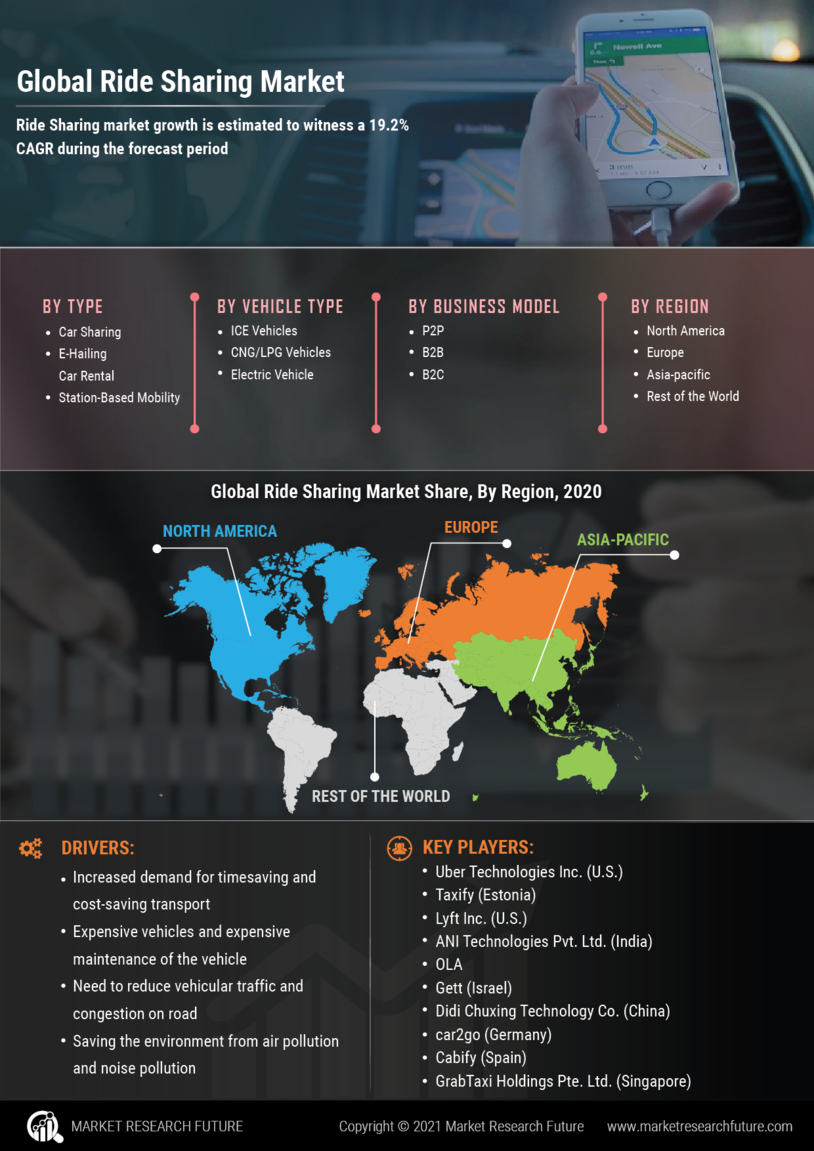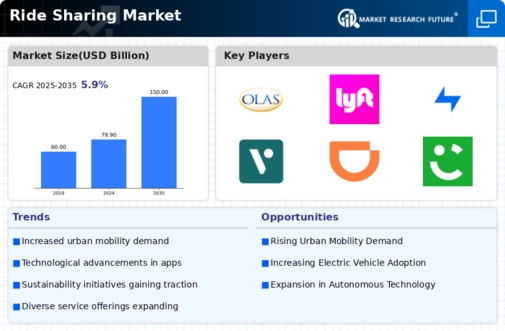The Ride Sharing Market is currently characterized by intense competition and rapid evolution, driven by technological advancements and shifting consumer preferences. Major players such as Uber Technologies Inc (US), Lyft Inc (US), and Didi Global Inc (CN) are at the forefront, each adopting distinct strategies to enhance their market positioning. Uber Technologies Inc (US) continues to innovate with its focus on autonomous vehicle technology and expanding its delivery services, while Lyft Inc (US) emphasizes sustainability through electric vehicle integration. Didi Global Inc (CN) is leveraging its vast user base in China to explore international markets, indicating a strategic shift towards global expansion. Collectively, these strategies contribute to a dynamic competitive environment, where innovation and adaptability are paramount.
In terms of business tactics, companies are increasingly localizing their operations to better cater to regional demands. This approach not only optimizes supply chains but also enhances customer satisfaction by providing tailored services. The market structure appears moderately fragmented, with several key players exerting influence, yet the presence of numerous smaller companies fosters a competitive atmosphere that encourages innovation and service diversification.
In November 2025, Uber Technologies Inc (US) announced a partnership with a leading AI firm to enhance its ride-matching algorithms. This strategic move is likely to improve operational efficiency and customer experience, positioning Uber to better compete against its rivals. The integration of advanced AI technologies may also facilitate more personalized services, thereby attracting a broader customer base.
In October 2025, Lyft Inc (US) launched a new initiative aimed at transitioning its fleet to 100% electric vehicles by 2030. This ambitious plan not only aligns with global sustainability trends but also positions Lyft as a leader in eco-friendly transportation solutions. The potential for reduced operational costs and enhanced brand loyalty could significantly bolster Lyft's market share in the coming years.
In September 2025, Didi Global Inc (CN) expanded its services into Southeast Asia, marking a significant step in its international growth strategy. This expansion is indicative of Didi's intent to diversify its revenue streams and mitigate risks associated with its home market. By tapping into emerging markets, Didi may enhance its competitive edge and establish a stronger global presence.
As of December 2025, the Ride-Hailing Market is witnessing trends that emphasize digitalization, sustainability, and the integration of AI technologies. Strategic alliances are increasingly shaping the competitive landscape, enabling companies to pool resources and expertise. Looking ahead, competitive differentiation is likely to evolve from traditional price-based strategies to a focus on innovation, technological advancements, and supply chain reliability. This shift underscores the importance of adaptability in a rapidly changing market.
In December 2024, Gobi Partners led a $10 million funding round for a Singapore ride-sharing platform, supporting its regional expansion. The investment will enhance technology, fleet offerings, and market penetration. It reflects investor confidence in Southeast Asia’s mobility sector.
In September 2025, AVRide — the robotaxi service by Uber — launched in Dallas, marking the ride-hailing company’s first commercial robotaxi rollout in the U.S. The service uses autonomous vehicle technology to offer on-demand transportation. It represents a milestone in the commercialization of self-driving mobility.

















Leave a Comment